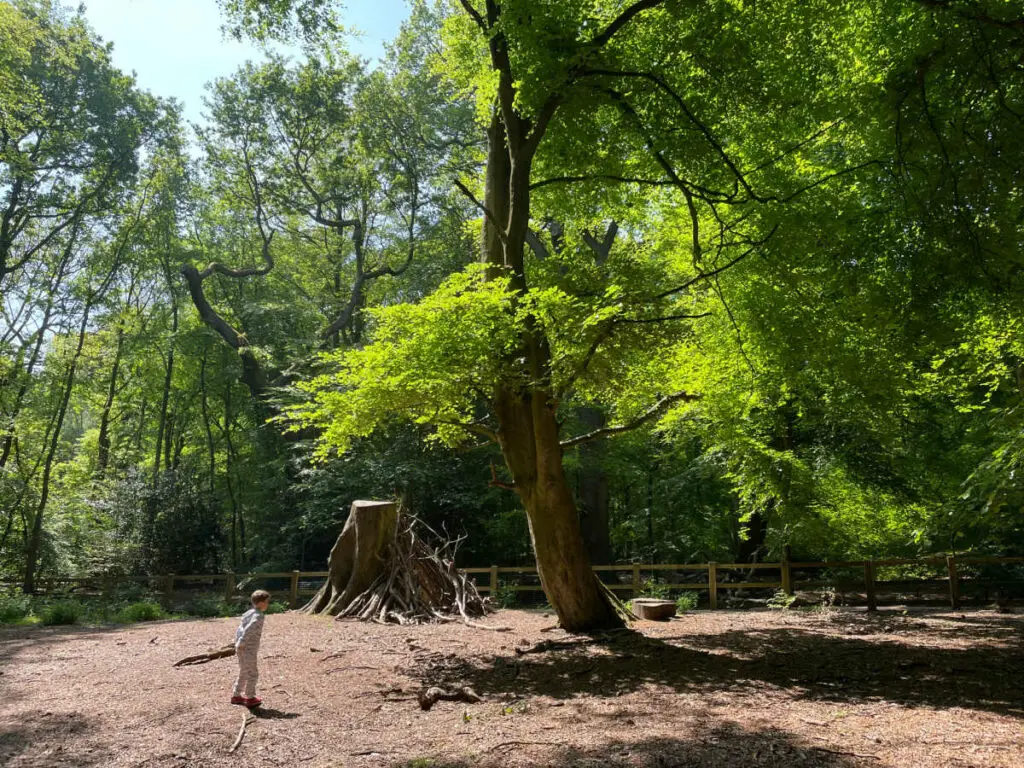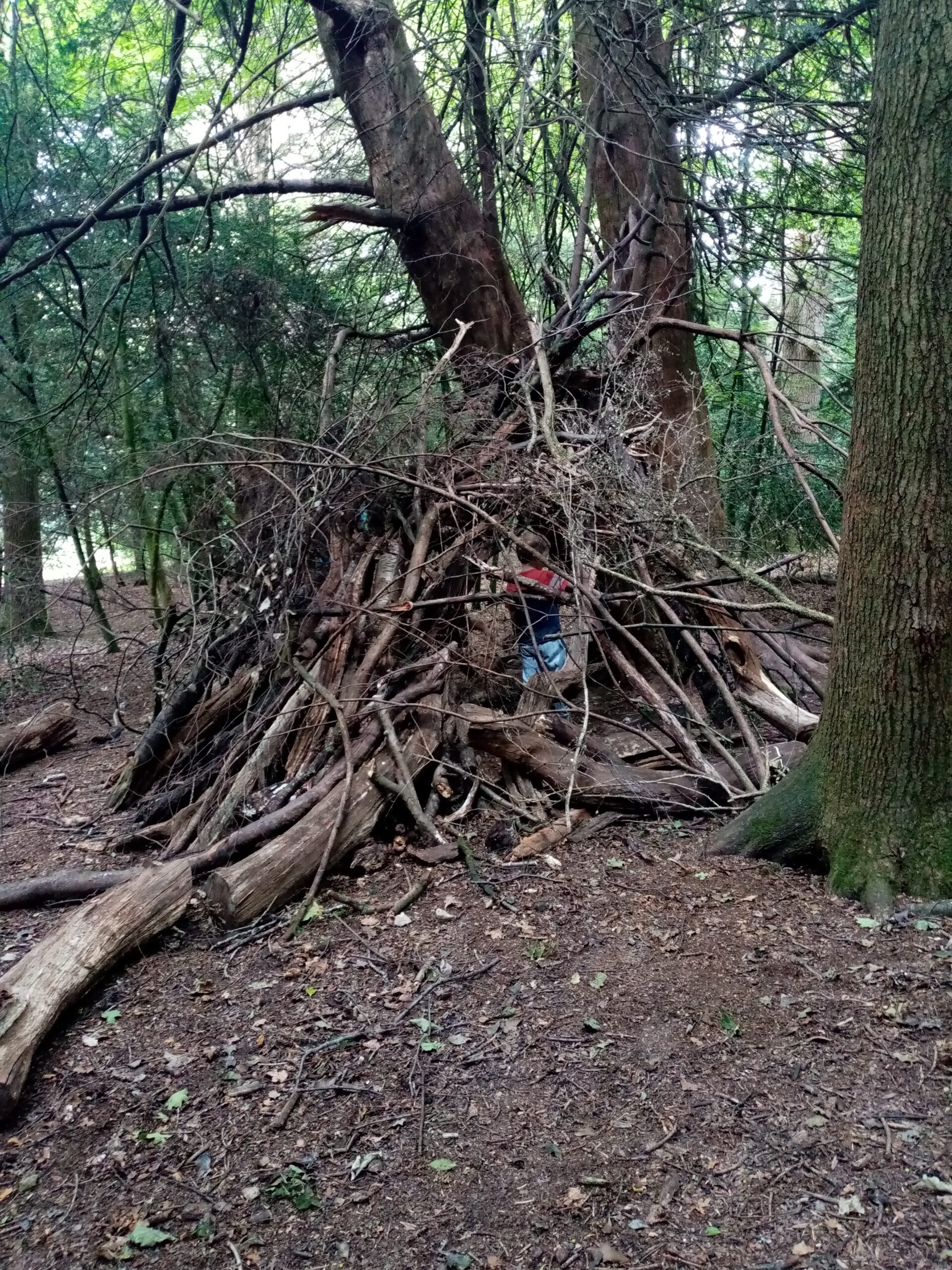Exploring Different Types of Shelter for Forest School
When it comes to outdoor education in forest school settings, having a range of different types of shelter is essential. In this blog post we’ll explore the three main types of shelter used for forest schools – tarp shelters, dens and wooden constructed shelters.
We’ll discuss safety considerations that must be taken into account when using these structures as well as some creative ideas on how to use them effectively with children during outdoor playtime!
So if you’re looking for information about the best types of shelter for your forest school setting, read on and discover all there is to know about tarp shelters, dens and wooden constructed shelters.
Tarp Shelters
Tarp shelters are a great option for forest school settings, as they are lightweight and easy to set up. To get started with tarp shelters, you will need some basic materials: tarps (obviously!), rope or cordage, tent stakes or rocks, and bungee cords.
Tarps come in various sizes and colors so you can choose the one that best suits your needs. Rope is necessary to secure the shelter in place; it should be strong enough to hold the weight of the tarp when stretched out.
Tent stakes or rocks can be used to keep the corners of the tarp down while bungee cords help provide extra tension if needed.
Setting it up
Setting up a tarp shelter is relatively simple once you have all your materials ready. Start by laying out your chosen tarp on flat ground so you can see the area it covers.
Stake down each corner or use rope or cordage to tie off each corner securely. Tie it to trees or other fixed structures – make sure it’s tight! Finally, add any additional tensioning with bungee cords if desired before enjoying your new shelter!
Using a tarp shelter offers several benefits for outdoor education activities at forest schools. Firstly, they are quick and easy to set up, making them ideal for spontaneous playtime activities.
Secondly, they provide protection from rain showers without having to go inside, which is great if you are in the forest or a school setting where there is no permanent shelter.
If you have a permanent shelter, those generally are better for rain protection, but we’ve found that there’s no harm having a tarp up in a different area or as an ‘extension’ as well. Kids love hearing the sound of rain on the canvas!
The portability of this kind of shelter means you can take them anywhere (as long as there is somewhere to attach it). They are perfect for exploring different areas of your setting.
Tarp shelters also offer an opportunity for creative problem solving if you get the kids involved with working out where to string them up, tying the knots and getting it in place. And taking it down.
Dens
Dens are a great way to engage children in outdoor learning activities and in a forest school setting, you’re likey to have all the things you need.
They can be used as play areas, hideouts, or just a place for kids to explore and use their imaginations. There are many different types of dens that can be built depending on the materials available and the desired outcome – what we have found works best is a simple one that’s made of sticks/logs.

Types of dens
Natural den building is one type of den that involves using natural materials such as sticks, logs, stones, and other items found in nature to construct an area where children can explore and play. Many a happy hour has been spent making these!
Or sitting in ones that other families or children have made.
Another type of den is a more low-key tarp shelter which uses tarps or blankets draped over poles or trees to create an enclosed space. These aren’t something we would leave out in the woods overnight. Let the kids make them and then take them down.
Finally, wooden constructed shelters involve using wood planks or pallets to build walls around an area for protection from the elements. If you think your setting needs a permanent structure, talk to the landowner or school leadership team first.
Building tips for dens
When constructing any type of den it’s important to consider safety first by making sure all materials are secure and sturdy before allowing children into the area.
For natural dens it’s best practice to check with local authorities about collecting items from nature as some areas may have restrictions on what you can take from public spaces. Obviously, we’re picking up fallen branches from the ground and not sawing bits off living trees.
Problem solving benefits of dens!
Building dens in forest school settings offers many advantages. It encourages creative problem solving skills among students as they figure out how best to construct their own unique design with limited resources available, fostering collaboration between peers who must work together towards a common goal while also developing communication skills through discussion about potential solutions during construction time.
Step back, and let the kids work out how to carry that big log between them!
Dens are a great way to encourage exploration, creativity and problem solving in forest school settings.
Safety considerations for all types of shelter in forest school settings
OK, so you want a shelter. It has to be safe. There can be elements of risk, that’s one of the key learning aspects of forest school and it offers children the opportunity to create something in a safe environment, learning how to balance risk.
But as the forest school leader, we should be taking the lead in making sure that overall, the den ‘projects’ are safe.
Weather conditions and shelter use
It is important to consider the weather conditions when using any type of shelter in a forest school setting. If it is raining, for example, tarps can be used to provide protection from the elements.
However, if there are strong winds or heavy snowfall, then using the wooden constructed shelters on site is going to be more suitable as they offer greater stability and protection.
Don’t use tarp-based dens or shelters in high winds, and watch out for rain pooling on the top which makes the whole thing heavy.
All types of shelter should be checked regularly for signs of wear and tear that could affect their structural integrity.
Watching out during a session
Talk to the children about safety and set any boundaries that you feel are appropriate, for example:
- Don’t hang off the ropes that attach the tarp to the trees
- Don’t climb on top of the shelter
- Don’t try and undo the knots
and so on, depending on your setting, the experience of the forest school participants and your risk assessment.
Put away any tools used during construction when not in use so that they do not pose a risk to anyone nearby.
Do your risk assessments! That’s the best way to understand hazards and the steps you should take.
Making your shelters more interesting
There are many ways to get creative with shelters in forest school settings!
Art-y projects
Use natural materials such as leaves, sticks and stones to create unique designs on or under the shelter’s surface.
Games and activities
Dens made from wooden structures or tarps provide a perfect setting for imaginative play activities. Children can pretend they are living in their own little world inside the den, creating stories and adventures together.
We’ve seen pre-teens do some great imaginative, role-playing play… until they’ve seen that we’ve seen them, and which point they go back to being ‘cool’!
Dens also make excellent hideouts during games like tag or hide-and-seek!
Base for storytelling
Get all the children inside the shelter for storytelling time. This is going to work best with younger forest school participants, who are still interested in hearing stories!
Are you going to build a shelter?
As you can imagine, there are many types of shelter that can be used in forest school settings, and the limit is really exactly that — your imagination!
Mix and match the shelters to the needs of your group, your site risk assessment and any other factors for your setting. With some creative ideas, these different types of shelter can become an integral part of your outdoor learning environment!

About the author: Elizabeth Borley
Elizabeth is our forest school administrator, responsible for running the website and managing bookings for afterschool clubs. She is a member of the Forest Childcare Association and loves walking in the woods and places with a view. As a parent, she understands the value of children spending time outdoors.
